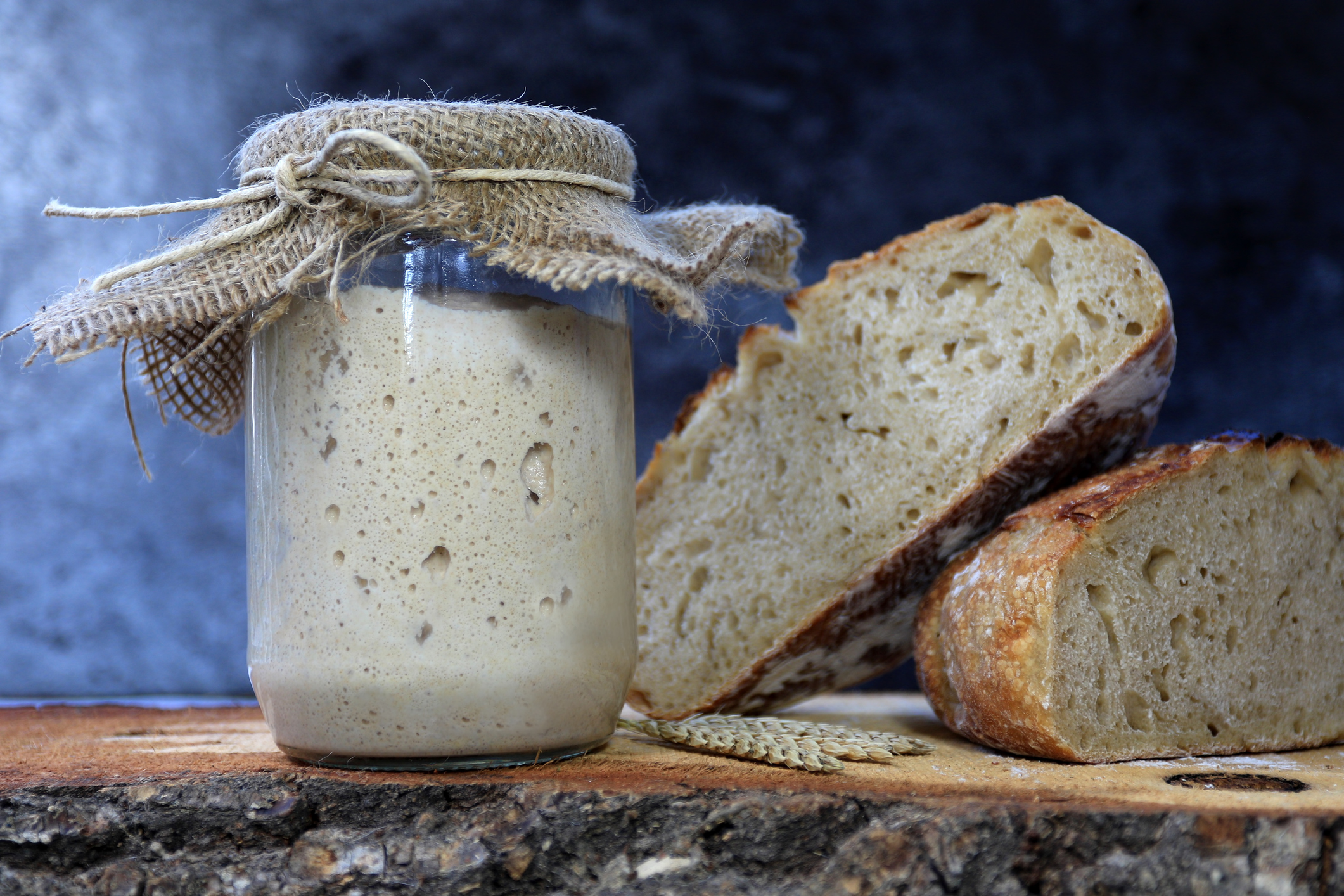Everyone loves a fresh slice of warm sourdough bread. But what is the science behind that crisp and chewy baked good? The main foundation of the unique bread: a sourdough starter.
Sourdough starters begin with the colonization of yeast and bacteria that grow in a mixture of water and flour. They can be maintained by managing the developing ecosystem of microscopic yeast and bacteria (microorganisms). Several factors must be controlled for these microorganisms to survive and grow within the starter.
Factors that Influence Microorganism Growth
- Time: Creating a sourdough starter from scratch takes several days of regular feedings (providing fresh flour as food) to establish the ecosystem of microorganisms. On average, it takes 7 to 10 days for a starter to be ready for use in baking.
- Temperature: Starters grow best at warm temperatures, around 70 degrees Fahrenheit, a comfortable room temperature. When starters are in a cooler temperature, the growth and fermentation is slowed. When starters are in higher temperatures, growth and fermentation may occur too rapidly and may even stop, resulting in the starter going bad. Fermentation is when sugars breakdown into more-simple substances.
- Moisture: Water is needed to help microorganisms in the starter. Follow your recipe for appropriate water measurements.
- Bacteria: Bacteria is present from the flour, water, and container when the starter is first created. Bacteria is present from the surrounding environment, including the human bodies, air, insects, and surrounding food giving each starter its own unique microbiome. Bacteria present in the starter begins to expand while it grows, increasing the volume of the starter.
- Yeast: Starters create their own yeast while metabolizing the flour. Yeast has an influence on the bacteria activity and the flavor of the sourdough.
- Unwanted particles: The starter should be loosely covered to help prevent the development and growth of mold. The covering helps prevent any unwanted particles of food or bugs to get into the starter.
A healthy and happy starter will have an abundance of bubbles and have a consistency similar to muffin batter. The starter can be poured out of the container; however, it should have a slow pace leaving the jar. A starter is ready to use when a small spoonful of the starter floats in room temperature water.
A starter has gone bad when there is mold growing within and on top of the starter, a foul smell is noticeable, and discoloration appears, such as green, pink or orange spots.
Things to Consider
When working with starters, keep in mind the following:
- Safe food handling: It is important to follow safe food handling practices at all times in the kitchen. Refresh your food safety knowledge by checking out SDSU Extensions article, Food Safety Helps You Stay Healthy.
- Different types of flours can be used for starters: Whole-wheat flour, Buckwheat flour, All-purpose flour, Bread flour, and other flours that contain a starch component.
- Wild yeasts: Starters create their own microbiomes with the yeasts and bacteria present in the air around them. The bacteria and yeast metabolize the flour and ferment it creating bubbles and increasing it’s volume.
- Up-keep: Starters must be fed flour twice daily if they are being stored at room temperature, or fed once weekly, if being stored in the refrigerator. Do not store your starter in the refrigerator until it has an established microbiome (after 7-10 days).
Creating your first sourdough starter may be a trial-and-error experiment. However, once you get your starter established, if maintained, it can thrive for years.



